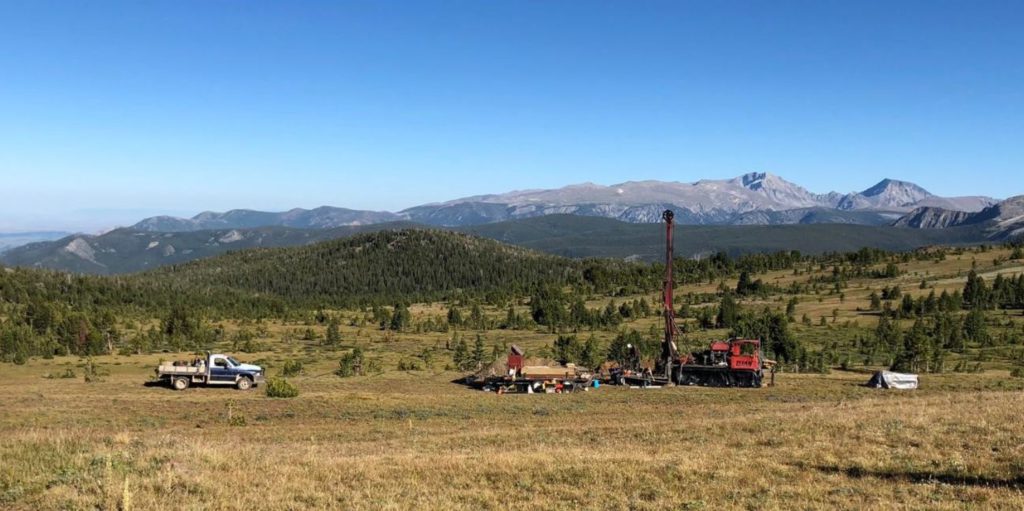Stillwater partners with Cornell on hydrometallurgy and carbon capture initiatives


Stillwater Critical Minerals (TSX.V: PGE; OTCQB: PGEZF; FSE: 5D32) has partnered up with Cornell University to conduct test work on less energy-intensive and carbon-negative approaches to metal recovery at its flagship nickel-PGE (platinum group elements)-copper-cobalt-gold project in Montana.
The partnership would fall under the MINER program funded by the US Department of Energy (DOE) via the Advanced Research Projects Agency (ARPA-E). The ARPA-E is tasked with promoting and funding research and development of advanced energy technologies, including high-potential, high-impact energy technologies that are too early for private sector investment.
Cornell University is the recipient of a federal grant from ARPA-E as part of a program entitled "Supercritical CO2-Based Mining for Carbon-Negative Critical Mineral Recovery". The objective of this federal program is to create a carbon-negative path, reduce the energy cost of separating the valuable part of mafic-ultramafic ores by 63%, and mineralize the carbon dioxide leftover from the critical mineral extracted.
Through this program, the university is seeking to advance CO2-sourced hydrometallurgical pathways for recovering energy critical metals, including nickel, cobalt, platinum and palladium, coupled to the carbon mineralization of calcium and magnesium components to produce calcium and magnesium carbonates.
Novel functional materials for the selective capture and recovery of these energy critical metals will be developed from this work. Various sources for CO2 will be investigated including air for metal recovery coupled to carbon mineralization.
These approaches will be specifically tuned to the mineralogy of the company's Stillwater West project, which hosts Platreef-style nickel and copper sulphide deposits containing 1.6 billion lb. of nickel, copper and cobalt, and 3.8 million oz. of palladium, platinum, rhodium and gold.
The test work will be led by Dr. Greeshma Gadikota, an assistant professor and Croll Sesquicentennial Fellow in the School of Civil and Environmental Engineering, with a field appointment in the Smith School of Chemical and Biomolecular Engineering at Cornell University. She currently directs the Sustainable Energy and Resource Recovery Group.
"The US imports the great majority of its energy critical metals from mines all over the world, leaving the US quite vulnerable. Our research is all about decarbonizing the mining industry and developing an independent, domestic supply chain of these critical metals," Dr. Gadikota stated in a media brief.
When speaking to the Cornell Chronicle earlier this year, she mentioned that her part of this work will build on earlier research funded two years ago by the Cornell Atkinson. She serves as the principal investigator in a project that involves recovering energy critical metals and using calcium and magnesium for carbon removal in agricultural environments.
According to Dr. Gadikota, this Atkinson-funded project has technical similarities that can be transferred to the mining world.
"We are very pleased to be selected as the industry partner for Dr. Gadikota's cutting-edge work and to work closely with her team toward our shared vision of securing the future domestic supply of the critical minerals the US so urgently needs. Our Stillwater West project is rapidly advancing as a potential large-scale, low-carbon source of nickel, copper, cobalt, palladium, platinum and rhodium," Michael Rowley, Stillwater Critical Minerals' president and CEO, stated.
According to Rowley, the Stillwater West project is on a very short list of assets with the potential to play a significant role in realizing the goals set out in the bipartisan Inflation Reduction Act and other ongoing initiatives. The property is located in an active and expanding US mining district with a long history of critical minerals production and demonstrated world-class scale and grade.
"It is our belief that mining can do more than supply minerals by conventional means, and that partnerships such as this are the path toward more sustainable practices," Rowley said.
Comments